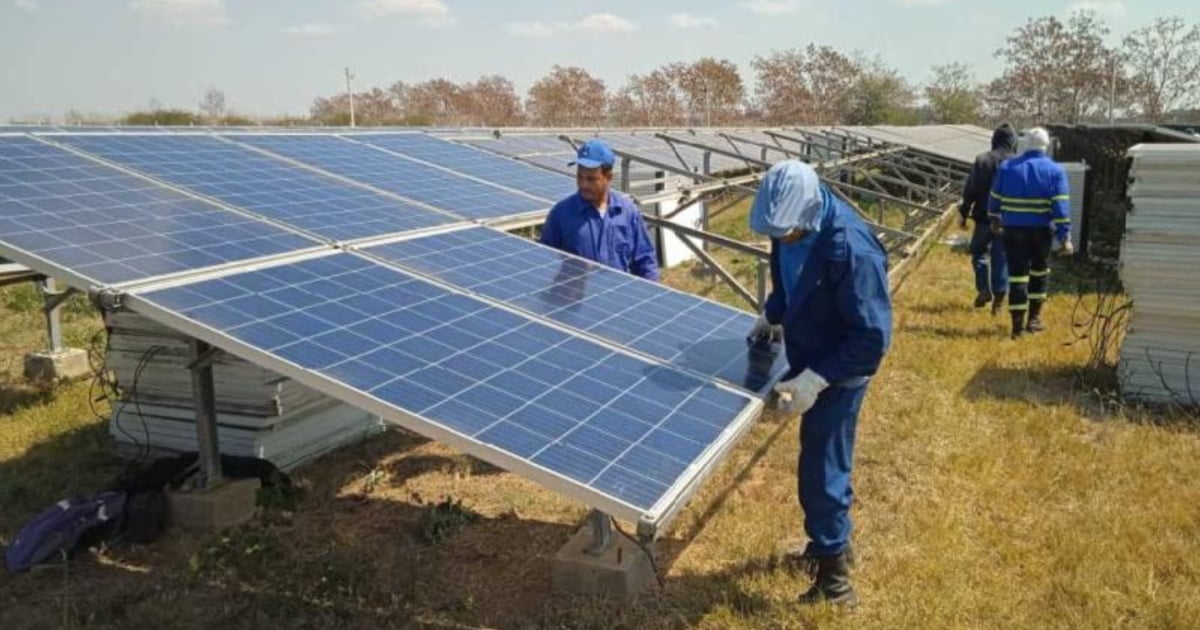On Saturday, the Cuban regime defended its position that solar photovoltaic parks alone cannot "resolve" the country's energy shortfall, following the public's rising expectations with the launch of several such facilities. Geider Mompié Rodríguez, director of the Granma Electric Company, informed state-run local media that overcoming the energy shortfall during peak daytime hours would require the "integration and synchronization of all" the solar parks. He clarified that once the planned 55 parks for this year are inaugurated—and the total reaches 92 by 2026—synchronizing the 2,000 MW they will generate will alleviate the midday peak strain.
Referring to La Sabana park, inaugurated on March 21 in Bayamo, he mentioned that it operates at up to 24 MW capacity, which is only 20% of Granma's daytime demand. "During this time of year, Granma consumes 100 to 120 MW at midday peak, and the park is delivering just 21.87 MW, roughly 20 percent of the province's demand. Hence, one park alone does not solve the problem," he explained.
Additionally, he pointed out that the regime has only acquired 10% of the accumulation systems needed for integration into the transmission substations. However, these "battery banks" are not designed for prolonged energy supply but to "regulate the system frequency" when a park's production is interrupted for any reason, the director stated.
On Facebook, where the news about solar parks was shared, many users questioned when the generation from these parks would become significant in their respective provinces. Some argued that the impact of renewable energy is not noticeable because all are connected to the National Electric System (SEN) and do not generate energy solely for their location.
"If these weren't connected to the SEN and the generation was only for the province, then we would have already seen a decrease in power outages in our area. So, we still have to wait for more synchronization with the national grid to see improvements, while we continue with these irritating blackouts," a Cuban resident commented.
Others noted that since the installation of solar fields, the situation has worsened: "Since the operation of 8 parks, everything has gone downhill, suggesting something is amiss with the information provided."
"What I don't understand is how, with the addition of 7 parks totaling over 300 MW, Granma's situation is worse than before, with blackouts lasting 10 to 12 hours and sometimes 14 to 15 hours continuously, even with all thermoelectric plants contributing to the SEN. Sometimes I think we are truly pitiful and embarrassing," another user expressed, suggesting that all the energy might be directed to Havana: "Because all MWs are for Havana."
Cuba may face even more severe blackouts this Saturday, April 5, according to an official report from the Electric Union (UNE), which predicts a maximum impact of 1,635 MW during peak hours, a figure exceeding the actual deficit reported on Friday, which was already higher than planned.
According to Saturday's information note, the island has experienced continuous electrical disruptions over the last 24 hours, reaching a maximum of 1,727 MW at 8:10 p.m. on Friday. This figure surpassed the 1,619 MW forecasted the previous day, a recurring pattern that calls into question the reliability of the reports issued by the UNE, a state-owned company known for its lack of transparency and data manipulation.
Understanding Cuba's Energy Challenges
Why can't a single solar park solve Cuba's energy deficit?
A single solar park cannot solve Cuba's energy deficit because it only contributes a fraction of the total energy demand. The integration and synchronization of multiple parks are necessary to significantly impact the energy shortfall.
What is the role of battery banks in Cuba's solar energy strategy?
Battery banks are used to regulate system frequency rather than providing long-term energy supply. They help maintain stability when a solar park's production is temporarily interrupted.
Why are some Cubans skeptical about the effectiveness of solar parks?
Some Cubans are skeptical because they have not seen a noticeable reduction in power outages, despite the installation of several solar parks. Concerns about transparency and data accuracy further fuel skepticism.
